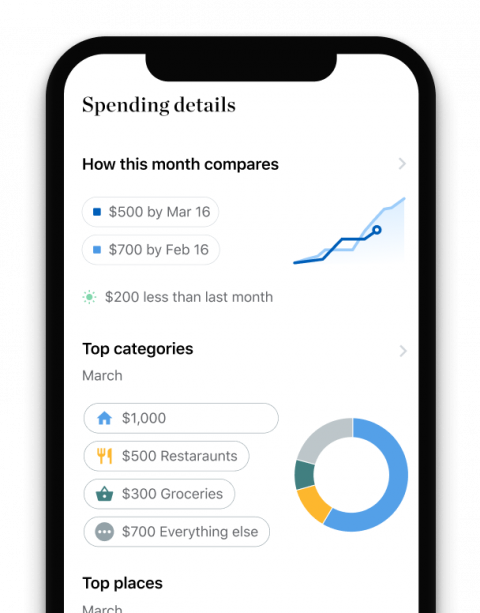
Unemployed student borrowers must receive unemployment benefits or be seeking work to get unemployment deferment.

Ryan Lane
Assigning Editor | Small business, student loans
Ryan Lane is an editor on NerdWallet’s small-business team. He joined NerdWallet in 2019 as a student loans writer, serving as an authority on that topic after spending more than a decade at student loan guarantor American Student Assistance. In that role, Ryan co-authored the Student Loan Ranger blog in partnership with U.S. News & World Report, as well as wrote and edited content about education financing and financial literacy for multiple online properties, e-courses and more. Ryan also previously oversaw the production of life science journals as a managing editor for publisher Cell Press. Ryan is located in Rochester, New York.
Lead Assigning Editor Des Toups
Lead Assigning Editor | Student loans, repaying college debt, paying for college
Des Toups was a lead assigning editor who supported the student loans and auto loans teams. He had decades of experience in personal finance journalism, exploring everything from car insurance to bankruptcy to couponing to side hustles.
Fact CheckedMany, or all, of the products featured on this page are from our advertising partners who compensate us when you take certain actions on our website or click to take an action on their website. However, this does not influence our evaluations. Our opinions are our own. Here is a list of our partners and here's how we make money.
An unemployment deferment allows you to postpone repayment of federal student loans for up to 36 months. To qualify, unemployed student borrowers must be receiving unemployment benefits or working part time while seeking full-time work.
If you've lost your job since the pandemic began, you don’t need to apply for a student loan deferment immediately. That's because the federal government is postponing federal student loan payments interest-free until Sept. 1, but you'll need to start paying bills again in October. You do not need an application or documentation to request this break — your servicer will apply it automatically.
Once the payment pause ends this fall, an unemployment deferment may be a good choice if you expect to start working again soon. Otherwise, a better long-term strategy is enrolling in an income-driven repayment (IDR) plan that ties payments to your financial situation. If you're unemployed, or your income is low enough, your monthly bills could be $0 under an IDR — and you'll earn credit towards student loan forgiveness.
What to do if you have private student loansPrivate lenders may let you postpone payments if you’re unemployed or facing a financial hardship. Interest always accrues during these breaks, increasing the amount you owe. Contact your lender for details on its deferment and forbearance policy.
You will need to submit an unemployment deferment application to your student loan servicer to receive this postponement. With your form, you must do one of the following for approval:
Attach proof of unemployment benefits. You must provide documentation that shows you’re currently eligible for unemployment, such as a copy of your benefits from your state’s Department of Labor. This documentation needs to include your name, address and Social Security number.
Confirm you’re seeking full-time work. You must have made at least six attempts in the last six months to gain full-time employment. You must also be registered with an unemployment agency, unless there isn’t one within 50 miles of your home. Using a temp agency or job search website doesn’t count.
You can also get an unemployment deferment if you’re underemployed — working, but not full time. That means a job that’s less than 30 hours a week and won’t last more than three months in a row. You can’t qualify if you’ve rejected any recent offers of full-time employment — even if you were overqualified for the position.
If you meet the requirements for an unemployment deferment, your servicer cannot deny your application.
If you have unsubsidized or parent or grad PLUS loans, interest could build on your student loans while you defer them. If you don't pay the interest as it accrues during deferment, it will be capitalized after your deferment period ends, which means it will be added to your loan principal. This could bump up the total amount you'll repay over the life of your loan.
Subsidized and Perkins loans are exempt from interest accruing during a deferment.
You can receive up to 36 months of unemployment deferment, but not all at once. You’ll need to reapply for the postponement — and meet the indicated qualifications — every six months.
Deferment length also varies by loan type. If you have Federal Family Education Loan Program, or FFELP , loans from before July 1, 1993, your maximum unemployment deferment is 24 months. Perkins borrowers can receive 36 months, but in 12-month increments.
All unemployment deferments end once you’ve exhausted your eligibility or gotten a job. Once you’re working full-time, you must let your federal student loan servicer know immediately.
If you’ve returned to work or otherwise don’t meet the requirements for an unemployment deferment, other options that reduce payments can keep you out of student loan default . The best choice will depend on your financial situation:
If you can’t afford your current payments. Income-driven repayment plans set your monthly payments at a percentage of your discretionary income . These plans will extend your repayment term to 20 or 25 years, potentially increasing the amount you repay. Income-driven payments can be as little as $0, but many factors affect the calculation .
If you can’t pay anything — even income-driven payments. Economic hardship deferment is available if you’re working full-time and meet one or more of the following qualifications: serving in the Peace Corps; receiving assistance from a program such as the Supplemental Nutrition Assistance Program (SNAP); or earning less than 150% of the poverty guideline for your family size and state of residence.
If you’re catching up on other financial priorities. Once you’re getting a paycheck again, you may have more pressing bills to pay than student loans, like a high-interest credit card. Student loan forbearance lets you pause payments at the discretion of your lender. It’s not a good long-term option since interest accrues on all loans, but forbearance can offer temporary breathing room.
About the authorYou’re following Ryan Lane
Visit your My NerdWallet Settings page to see all the writers you're following.
Ryan Lane is an assigning editor for NerdWallet whose work has been featured by The Associated Press, U.S. News & World Report and USA Today. See full bio.
On a similar note.

Download the app
Disclaimer: NerdWallet strives to keep its information accurate and up to date. This information may be different than what you see when you visit a financial institution, service provider or specific product's site. All financial products, shopping products and services are presented without warranty. When evaluating offers, please review the financial institution's Terms and Conditions. Pre-qualified offers are not binding. If you find discrepancies with your credit score or information from your credit report, please contact TransUnion® directly.
NerdUp by NerdWallet credit card: NerdWallet is not a bank. Bank services provided by Evolve Bank & Trust, member FDIC. The NerdUp by NerdWallet Credit Card is issued by Evolve Bank & Trust pursuant to a license from MasterCard International Inc.
Impact on your credit may vary, as credit scores are independently determined by credit bureaus based on a number of factors including the financial decisions you make with other financial services organizations.
NerdWallet Compare, Inc. NMLS ID# 1617539
California: California Finance Lender loans arranged pursuant to Department of Financial Protection and Innovation Finance Lenders License #60DBO-74812
Insurance Services offered through NerdWallet Insurance Services, Inc. (CA resident license no.OK92033) Insurance Licenses
NerdWallet™ | 55 Hawthorne St. - 10th Floor, San Francisco, CA 94105